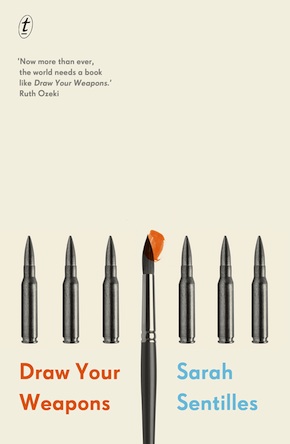What’s in a picture
by Sarah SentillesI don’t remember where I first saw the photograph, but I do remember what I saw: A man standing on a box wearing nothing but a blanket. A bag over his head. Arms stretched out from his sides. Wires attached to his body.
…
To look at a photograph of someone after that person has died is to take into your arms what is dead, what is going to die, Roland Barthes wrote. The person is still alive in the photograph, yet dead in the world, and you, the viewer, the person looking at a living image of a dead thing, must ask yourself, Why is it that I am alive here and now?
…
Let’s start with a photograph, Virginia Woolf proposed in Three Guineas. This photograph. A photograph of a body. A body so mutilated, she couldn’t tell if it was a human being or a pig. But certainly those are dead children, and that is undoubtedly the section of a house.
Woolf was responding to a lawyer who had asked how, in her opinion, they were to prevent war. To answer, she pointed to the photograph. She was sure she and the lawyer would have the same response to it – horror and disgust – a response that would allow them to bridge the difference between them that resulted from the fact that she was a woman and he was a man. (Men make war and men like war and women do not, Woolf argued. The vast majority of birds and beasts have been killed by you, not by us.) Looking at the photograph, she knew they would agree that war is an abomination, that it must be stopped. For now at last we are looking at the same picture; we are seeing with you the same dead bodies, the same ruined houses.
…
Parts of bodies had been pixelated, blurred, blacked out, as if the only thing troubling about the photographs was the nakedness.”
There are pictures of prisoners strapped to metal bed frames. Men covered in excrement. Men on their knees. Bodies packed in ice. Naked men against walls. A man on the end of a leash. In some images, American soldiers wear blue latex gloves. Smile. Laugh. Thumbs up. Arms crossed. Cigarettes dangling out of the sides of their mouths.
There are pictures of female prisoners, too, their shirts lifted, breasts visible, but they didn’t show those, not on television or in the newspaper.
Newspapers curated online slide shows that started with a warning: Images contain explicit sexual content. Viewer discretion advised. Parts of bodies in the images that followed had been pixelated, blurred, blacked out, as if the only thing troubling about the photographs was the nakedness.
…
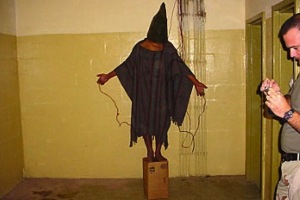 People in photographs watch you, silently address you, Eduardo Galeano wrote. My world is your world too, they say; my time is also your time.
People in photographs watch you, silently address you, Eduardo Galeano wrote. My world is your world too, they say; my time is also your time.
…
The first person to use the word photography, in 1833, was Hercules Florence, a French artist living in Campinas (now part of São Paulo, Brazil), a district of slave-maintained coffee plantations. The first image Florence made was of the jailhouse he could see from his front porch, a jailhouse that housed runaways and disobedient slaves.
Photography rendered slavery visible, Nicholas Mirzoeff wrote.
…
Sabrina Harman – the woman in the Abu Ghraib photographs crouched behind the pyramid of naked bodies, the woman giving the thumbs-up and smiling next to a dead body packed in ice – is the daughter of a homicide detective.
When her mother had first learned Sabrina was taking photographs at the prison, she’d told Sabrina to bring the pictures home. Hide them and stay out of it, she’d said.”
Harman, one of the soldiers prosecuted in the Abu Ghraib scandal, was charged, in part, with taking photographs. Of that pyramid. Of that dead body. It was Harman who attached wires to the man on the box, who told him if he fell off, he would be electrocuted. She was sentenced to six months in prison.
Harman’s father often brought home pictures of crime scenes for his family to examine, her mother told The Washington Post. Harman had been looking at autopsies and crime-scene photographs since she was a kid. Her mother insisted Sabrina took the photographs – and collected photographs of torture taken by others – so she’d have evidence of the mistreatment of prisoners, proof.
When her mother had first learned Sabrina was taking photographs at the prison, she’d told Sabrina to bring the pictures home. Hide them and stay out of it, she’d said.
…
In 1850, the biologist Louis Agassiz hired J.T. Zealy, a daguerreotypist, to take pictures of enslaved Africans living on plantations in South Carolina. Agassiz wanted the daguerreotypes to prove the races were so physically different that there must have been two separate moments of creation, two origins, one for Whites and one for Blacks, which would, in his mind, justify enslaving one group for the benefit of the other.
The abolitionist Frederick Douglass called Agassiz’s theory of polygenesis scientific moonshine.
…
At Abu Ghraib, Sabrina Harman stopped other soldiers from stepping on insects. Sabrina literally would not hurt a fly, her team leader Sergeant Hydrue Joyner said. If there’s a fly on the floor and you go to step on it, she will stop you.
We’d try to kill a cricket, because it kept us up all night in the tent, Specialist Jeremy Sivits said. Harman would rescue the cricket, carry it outside the tent, and let it go.
She wouldn’t step on an ant, Sergeant Javal Davis said. But if it die[d] she’d want to know how it died.
…
More than one hundred years after they were taken, fifteen of Zealy’s daguerreotypes were found in the attic of the Peabody Museum of Archaeology and Ethnology in Cambridge, Massachusetts. The images show five Black men of African birth and two African American women, daughters of two of the men. The people in the photographs stand alone, facing the camera, with their backs to the camera, or in profile. In most of the images, their clothing has been removed. Labels on the photographs record the subjects’ names, the African tribe with which they were affiliated, and the name of their owner. In one photograph taken in 1850, titled Delia, Country-Born of African Parents, Daughter of Renty, Congo, Plantation of B.F. Taylor, Esq., a woman stands in a patterned dress that has been forced down to expose her breasts.
Despite the photographer’s intentions, what you see in the photographs is the refusal of the enslaved to perform as racialized human property.
…
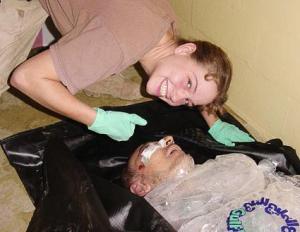 Sabrina Harman had a pet in Iraq, a kitten. It was killed by a dog. The kitten’s body had no visible injuries, so she performed an autopsy and found internal organ damage. One of her friends mummified its head, gave it pebbles for eyes. Harman photographed it in different places – on a bus seat with sunglasses, smoking a cigarette, wearing a tiny camouflage boonie hat, floating on a little pillow in the wading pool, with flowers behind its ears.
Sabrina Harman had a pet in Iraq, a kitten. It was killed by a dog. The kitten’s body had no visible injuries, so she performed an autopsy and found internal organ damage. One of her friends mummified its head, gave it pebbles for eyes. Harman photographed it in different places – on a bus seat with sunglasses, smoking a cigarette, wearing a tiny camouflage boonie hat, floating on a little pillow in the wading pool, with flowers behind its ears.
She also took pictures of mummified human bodies in a morgue in Al Hillah, close-ups of faces and hands, torn flesh and bones, a severed foot, a punctured chest. In one, Harman leans over a blackened corpse, smiles, gives the thumbs- up. Whenever I get into a photo, she said, I never know what to do with my hands.
…
At the root of all art is the practice of embalming the dead, André Bazin wrote. A mummy complex. Art is the creation of an image that will live on after death. Preservation of life by a representation of life. The photograph is a death mask, he wrote: the taking of an impression by the manipulation of light.
…
If you look up Agassiz in the Encyclopedia Britannica, you won’t find any mention of racism or the daguerreotypes. The entry on Agassiz tells his story this way: born in Switzerland, the son of a Protestant pastor, Agassiz studied extinct fish and the movements of glaciers. In 1847, he moved to the United States to be a professor of zoology at Harvard. After his first wife’s death, he married Elizabeth Cabot Cary of Boston, a writer and a promoter of women’s education. He studied Lake Superior. He studied turtles. When Darwin’s On the Origin of Species was published, in 1859, Agassiz rejected the idea of a common origin because he believed every species represented a different moment of creation – each plant, each animal, he wrote, is a thought of God.
…
The very first daguerreotype is said to show a section of a wall and bench (or window ledge) cluttered with plaster casts of cupids with small wings. But when you look at the image, Ariella Azoulay wrote, this description is revealed to be a fabrication. The daguerreotype has become a plane of silvery ash. There is a gap between what was once visible and what can now be seen.
For Barthes, photographs attest to what was there – but Azoulay turned this idea on its head. Photographs, she argued, show that what ‘was there’ wasn’t there necessarily in that way.
…
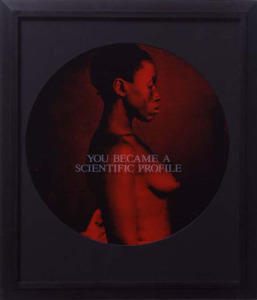 The artist Carrie Mae Weems, in a series called From Here I Saw What Happened and I Cried, altered photographs taken in the nineteenth century, including the daguerreotypes of the enslaved commissioned by Agassiz. Weems photographed and enlarged each image. She used a red filter when reprinting them. She placed each print in a circular mat and framed it under glass she’d sandblasted with text. Over an image of Delia, the woman whose dress was forced down to expose her breasts, Weems wrote these words: You became a scientific profile.
The artist Carrie Mae Weems, in a series called From Here I Saw What Happened and I Cried, altered photographs taken in the nineteenth century, including the daguerreotypes of the enslaved commissioned by Agassiz. Weems photographed and enlarged each image. She used a red filter when reprinting them. She placed each print in a circular mat and framed it under glass she’d sandblasted with text. Over an image of Delia, the woman whose dress was forced down to expose her breasts, Weems wrote these words: You became a scientific profile.
…
Susan Sontag began Regarding the Pain of Others by writing about the same photograph Virginia Woolf asked the lawyer to look at with her, the photograph of the body so mangled it’s not clear whether it’s a human or a pig, but, unlike Woolf, Sontag didn’t think photographs of war-caused violence necessarily turn people against war.
War tears, rends, Sontag wrote. War rips open, eviscerates. War scorches. War dismembers. War ruins. And photographs show this violence. Photographs say, Look: this is what a bullet does, a tank, a grenade, a rocket, a missile, a drone, a bayonet. But Sontag knew there was no guarantee about the kind of response a photograph of atrocity would give rise to. A call for peace. A cry for revenge. Or simply the bemused awareness, continually restocked by photographic information, that terrible things happen.
Yes, war is an abomination, yes, it must be stopped – Sontag agreed with Woolf ’s conclusions. But who today believes war can be abolished?
No one, she wrote. Not even pacifists.
From Draw Your Weapons (Text Publishing, £12.99)
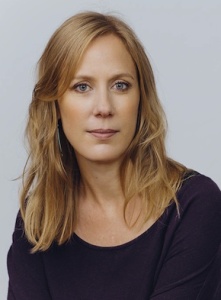 Sarah Sentilles is a former theologian who completed her undergraduate degree at Yale and a Masters and a Doctorate at Harvard. She was a college professor for over a decade before becoming a full-time writer, and lives in Idaho. Her previous books are Taught by America: A Story of Struggle and Hope in Compton, A Church of her Own: What Happens When A Woman Takes the Pulpit and Breaking Up With God: A Love Story. Draw Your Weapons is out now in paperback and eBook from Text Publishing.
Sarah Sentilles is a former theologian who completed her undergraduate degree at Yale and a Masters and a Doctorate at Harvard. She was a college professor for over a decade before becoming a full-time writer, and lives in Idaho. Her previous books are Taught by America: A Story of Struggle and Hope in Compton, A Church of her Own: What Happens When A Woman Takes the Pulpit and Breaking Up With God: A Love Story. Draw Your Weapons is out now in paperback and eBook from Text Publishing.
Read more
@SarahSentilles
sarahsentilles.com
Author portrait © Gia Goodrich/VEV Studios

